I propose to create Finno-Ugric principalities near Novgorod. These nations are very ancient. It will not be a big mistake to introduce them also into the game Imperator

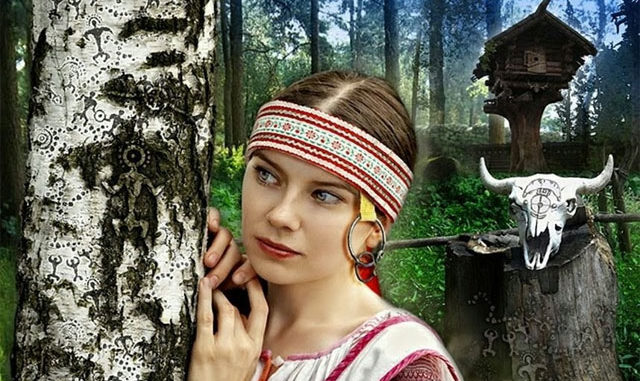
Izhora, Vepsians, Votes - Indigenous peoples of the Leningrad region
It is considered that the wet marshy lands on which our city St. Petersburg is located were almost unsuitable for life. However, this is not entirely true, or rather, not at all. Since ancient times these territories were inhabited mainly by Finno-Ugric peoples: Izhora, Chud, Votes. But, unfortunately, today these ethnic groups have assimilated and mixed with the Russians, who came to these lands long before the construction of the northern palmyra began. According to the census of 1989, only 62 people remained, the Izhorians numbered 449 people. Veps (Chud) managed to preserve their cultural identity - 12,501 people, and according to the census, half of them lived in the Leningrad Region, and half - in Kemerovo. The territory of the modern Leningrad region on both banks of the Neva and the regions of the western Ladoga area in pre-Petrine times had a proud name - Ingermanland or Izhora.


Izhora, Vepsians, Votes - Indigenous peoples of the Leningrad region
It is considered that the wet marshy lands on which our city St. Petersburg is located were almost unsuitable for life. However, this is not entirely true, or rather, not at all. Since ancient times these territories were inhabited mainly by Finno-Ugric peoples: Izhora, Chud, Votes. But, unfortunately, today these ethnic groups have assimilated and mixed with the Russians, who came to these lands long before the construction of the northern palmyra began. According to the census of 1989, only 62 people remained, the Izhorians numbered 449 people. Veps (Chud) managed to preserve their cultural identity - 12,501 people, and according to the census, half of them lived in the Leningrad Region, and half - in Kemerovo. The territory of the modern Leningrad region on both banks of the Neva and the regions of the western Ladoga area in pre-Petrine times had a proud name - Ingermanland or Izhora.
Today, there are three versions of the origin of the word "Ingermanlandia". According to the interpretation of the Finno-Ugric scholars, he has the Finnish root “inkeri maa”, which means “beautiful land”. Other researchers argue that the word comes from the name of the river Izhora, on the banks of which this nation lived. In the annals of the times of Rurikovich it is said: “Where then give birth to her son Ingor, and let her have a hail beside the sea with Izharo in Vienna.” Third sources say about Yaroslav the Wise's wife, Anna, whose first name is Ingigerd.
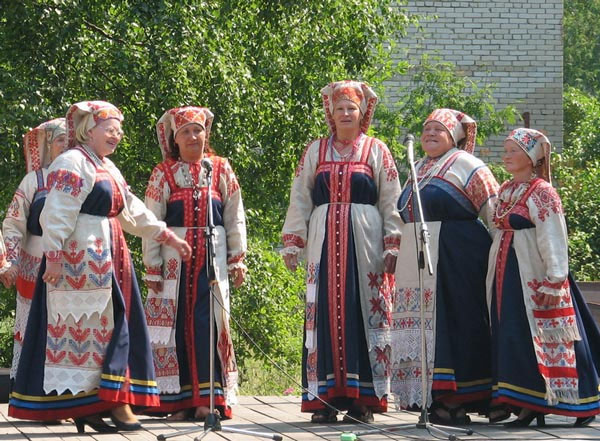
Be that as it may, all versions agree that in the first millennium of our era Izhoryans left the group of Karelian nationalities and belong to the Finno-Ugrians. The Izorians themselves called karyalayset, inkerikot, ingeroyset. The first written records of this tribe were found in the bull of Pope Alexander III to the Uppsala Bishop Stephen (approximately 1164), prohibiting the sale of weapons to the warlike pagan Sami, Vod, Karelian and Ingram tribes. In those days, the Izhors were already closely associated with the East Slavic tribes and were part of the Novgorod Republic. Our ancestors called all ethnic groups that inhabited the Karelian Peninsula, “Chudya” and did not single out the Izhora people particularly. But when the Karelians and the Izhora invaded Russian territories in the 13th century, the chronicles contain references to this tribe, which characterize it as a clever and cunning people. After the fall of the Novgorod principality since the creation of the Russian state, the Izhors actively assimilated with the Russian population, adopting Orthodoxy. In troubled times, Ingermanlandia became a province of Sweden in 1617 and Izhorians began to assimilate with the Finns, among whom were widely spread Protestant movements in Christianity. Their descendants, having adopted Lutheranism, began to be called "Inkeri" and received their branch of cultural development. Until our times, the Izhoryans and the Inkeri have avoided each other because of contradictions in religious concessions.
What did the Izhors do?
Irrespective of their religious preferences, the Izhors were mainly farmers - they grew rye, cabbage, barley, turnips, and oats, from the 19th century. potatoes, engaged in animal husbandry. Characteristically, cattle were driven into collective herds, which were grazed by hired shepherds. Izhora earned fishing, especially in the winter, ice fishing smelt, sprat, herring. And not only men but also women took part in this. Fishing could last more than one day, it was necessary to go far deep into the Gulf of Finland, so special wooden “booths” were built for overnight stays. In addition to fishing, the Izhoryans were engaged in out-harvesting, often they could be found among Petersburg drivers, factory workers or hired workers in rich peasant farms. But the most common among Izhors was hiring as shepherds (Soykol shepherds). The elements of the Izhora life. The Izhorians built their homes from logs, who are richer, from stone. The houses in the settlements stood in the neighborhood of the Russian huts, the Vods, the Ingrian Finns. Izhora mistresses were famous for their jelly, cottage cheese and yogurt, meat pies. But the main drink for Izhora was beer. Up to now, the traditions of žoros in men's clothes have not been preserved, it is almost the same as the Russian. But the women's outfit, on the contrary, was quite different from the sarafans inherent in the Slavs. Women's shirt (ryatsinya) had a characteristic cut and a buckle - fibula, on the shirt they wore two panels on the straps, which were thrown over the shoulders. On the left shoulder they wore a striped one, decorated on the edge with multi-colored stripes of fabric, a horsetail, he covered the right side. Aanua was passed through the right shoulder - this cloth was either blue or black and covered the left side. Over all this, izhorki wore a richly beaded silk or wool apron (polle). Sometimes they wore skirts (hurstut), which did not have side seams.
The elements of the Izhora life. The Izhorians built their homes from logs, who are richer, from stone. The houses in the settlements stood in the neighborhood of the Russian huts, the Vods, the Ingrian Finns. Izhora mistresses were famous for their jelly, cottage cheese and yogurt, meat pies. But the main drink for Izhora was beer. Up to now, the traditions of žoros in men's clothes have not been preserved, it is almost the same as the Russian. But the women's outfit, on the contrary, was quite different from the sarafans inherent in the Slavs. Women's shirt (ryatsinya) had a characteristic cut and a buckle - fibula, on the shirt they wore two panels on the straps, which were thrown over the shoulders. On the left shoulder they wore a striped one, decorated on the edge with multi-colored stripes of fabric, a horsetail, he covered the right side. Aanua was passed through the right shoulder - this cloth was either blue or black and covered the left side. Over all this, izhorki wore a richly beaded silk or wool apron (polle). Sometimes they wore skirts (hurstut), which did not have side seams.
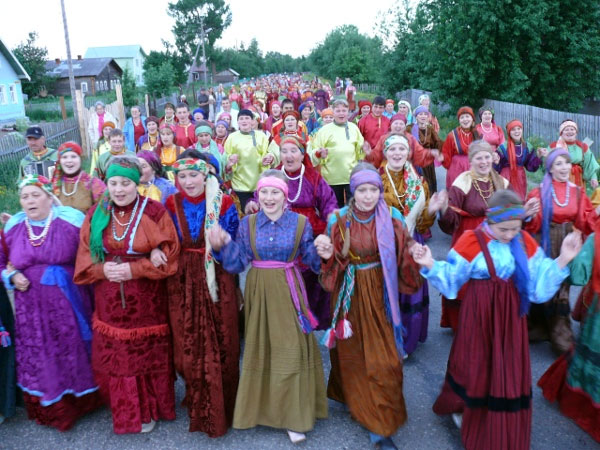
The outfit was completed with a hat in the form of a shawl covering the head (sapano). The Izhora legs were wrapped in red-colored cloth windings (rivat), pistons were worn, which were made of a single piece of unstitched rawhide or sewn streets. Traditions of Izhora Before the adoption of Christianity, the Izhora tribe worshiped stones and trees, communicated with spirits with the help of priests - arbui. Pagan roots had a custom on Egoryev's day (old style on April 23) to go around cattle yards with a knife in his teeth. And this day was considered to be a woman’s, married women gathered in one of the courtyards for a joint meal, the scrambled eggs were an obligatory attribute of it. The celebration of the day of Ivanovo on June 24 was almost the same as Russian traditions: the same bonfires, celebrations and fortune telling On Petrov's Day (old style June 29), the Izhora went to the groves sacred to them and left edible sacrifices to the spirits of the forest there. Interesting wedding traditions Izhor. Matchmaking was divided into three stages: on the first visit, the matchmaker visited the bride’s house and offered marriage, he received an answer only on the second visit, while a pledge exchange ceremony was performed, the betrothal could occur only during the third visit. At the same time, both during the second and during the third visit, all those who participated in matchmaking were obliged to smoke tobacco. On the eve of the wedding, the bride and girlfriends performed wedding lamentations. Both the groom and the bride performed certain rituals in the bath. After the wedding, the newlyweds went home to their parents, where everyone and their guests celebrated this event, and no one ate the wedding loaf (kuppeleilya). And the bridegroom could take the bride to her house only the next day, while the bride exchanged gifts from the bridegroom's relatives. The burial rites of Izhora also had archaic signs: the dead were buried not in cemeteries, but in sacred groves. Wool reins, a knife and food were put into the grave. The burial rite was accompanied by the performance of the lamentations that were sung by professional placues. The complete Russification of this nation began in the time of Peter the Great after the construction of St. Petersburg. And at the end of the XVIIIth, the Izhora settlements were already difficult to distinguish from the Russians. In the thirties of the last century, this ethnic group was forcibly settled and practically lost its national identity.

Be that as it may, all versions agree that in the first millennium of our era Izhoryans left the group of Karelian nationalities and belong to the Finno-Ugrians. The Izorians themselves called karyalayset, inkerikot, ingeroyset. The first written records of this tribe were found in the bull of Pope Alexander III to the Uppsala Bishop Stephen (approximately 1164), prohibiting the sale of weapons to the warlike pagan Sami, Vod, Karelian and Ingram tribes. In those days, the Izhors were already closely associated with the East Slavic tribes and were part of the Novgorod Republic. Our ancestors called all ethnic groups that inhabited the Karelian Peninsula, “Chudya” and did not single out the Izhora people particularly. But when the Karelians and the Izhora invaded Russian territories in the 13th century, the chronicles contain references to this tribe, which characterize it as a clever and cunning people. After the fall of the Novgorod principality since the creation of the Russian state, the Izhors actively assimilated with the Russian population, adopting Orthodoxy. In troubled times, Ingermanlandia became a province of Sweden in 1617 and Izhorians began to assimilate with the Finns, among whom were widely spread Protestant movements in Christianity. Their descendants, having adopted Lutheranism, began to be called "Inkeri" and received their branch of cultural development. Until our times, the Izhoryans and the Inkeri have avoided each other because of contradictions in religious concessions.
What did the Izhors do?
Irrespective of their religious preferences, the Izhors were mainly farmers - they grew rye, cabbage, barley, turnips, and oats, from the 19th century. potatoes, engaged in animal husbandry. Characteristically, cattle were driven into collective herds, which were grazed by hired shepherds. Izhora earned fishing, especially in the winter, ice fishing smelt, sprat, herring. And not only men but also women took part in this. Fishing could last more than one day, it was necessary to go far deep into the Gulf of Finland, so special wooden “booths” were built for overnight stays. In addition to fishing, the Izhoryans were engaged in out-harvesting, often they could be found among Petersburg drivers, factory workers or hired workers in rich peasant farms. But the most common among Izhors was hiring as shepherds (Soykol shepherds). The elements of the Izhora life. The Izhorians built their homes from logs, who are richer, from stone. The houses in the settlements stood in the neighborhood of the Russian huts, the Vods, the Ingrian Finns. Izhora mistresses were famous for their jelly, cottage cheese and yogurt, meat pies. But the main drink for Izhora was beer. Up to now, the traditions of žoros in men's clothes have not been preserved, it is almost the same as the Russian. But the women's outfit, on the contrary, was quite different from the sarafans inherent in the Slavs. Women's shirt (ryatsinya) had a characteristic cut and a buckle - fibula, on the shirt they wore two panels on the straps, which were thrown over the shoulders. On the left shoulder they wore a striped one, decorated on the edge with multi-colored stripes of fabric, a horsetail, he covered the right side. Aanua was passed through the right shoulder - this cloth was either blue or black and covered the left side. Over all this, izhorki wore a richly beaded silk or wool apron (polle). Sometimes they wore skirts (hurstut), which did not have side seams.
The elements of the Izhora life. The Izhorians built their homes from logs, who are richer, from stone. The houses in the settlements stood in the neighborhood of the Russian huts, the Vods, the Ingrian Finns. Izhora mistresses were famous for their jelly, cottage cheese and yogurt, meat pies. But the main drink for Izhora was beer. Up to now, the traditions of žoros in men's clothes have not been preserved, it is almost the same as the Russian. But the women's outfit, on the contrary, was quite different from the sarafans inherent in the Slavs. Women's shirt (ryatsinya) had a characteristic cut and a buckle - fibula, on the shirt they wore two panels on the straps, which were thrown over the shoulders. On the left shoulder they wore a striped one, decorated on the edge with multi-colored stripes of fabric, a horsetail, he covered the right side. Aanua was passed through the right shoulder - this cloth was either blue or black and covered the left side. Over all this, izhorki wore a richly beaded silk or wool apron (polle). Sometimes they wore skirts (hurstut), which did not have side seams.

The outfit was completed with a hat in the form of a shawl covering the head (sapano). The Izhora legs were wrapped in red-colored cloth windings (rivat), pistons were worn, which were made of a single piece of unstitched rawhide or sewn streets. Traditions of Izhora Before the adoption of Christianity, the Izhora tribe worshiped stones and trees, communicated with spirits with the help of priests - arbui. Pagan roots had a custom on Egoryev's day (old style on April 23) to go around cattle yards with a knife in his teeth. And this day was considered to be a woman’s, married women gathered in one of the courtyards for a joint meal, the scrambled eggs were an obligatory attribute of it. The celebration of the day of Ivanovo on June 24 was almost the same as Russian traditions: the same bonfires, celebrations and fortune telling On Petrov's Day (old style June 29), the Izhora went to the groves sacred to them and left edible sacrifices to the spirits of the forest there. Interesting wedding traditions Izhor. Matchmaking was divided into three stages: on the first visit, the matchmaker visited the bride’s house and offered marriage, he received an answer only on the second visit, while a pledge exchange ceremony was performed, the betrothal could occur only during the third visit. At the same time, both during the second and during the third visit, all those who participated in matchmaking were obliged to smoke tobacco. On the eve of the wedding, the bride and girlfriends performed wedding lamentations. Both the groom and the bride performed certain rituals in the bath. After the wedding, the newlyweds went home to their parents, where everyone and their guests celebrated this event, and no one ate the wedding loaf (kuppeleilya). And the bridegroom could take the bride to her house only the next day, while the bride exchanged gifts from the bridegroom's relatives. The burial rites of Izhora also had archaic signs: the dead were buried not in cemeteries, but in sacred groves. Wool reins, a knife and food were put into the grave. The burial rite was accompanied by the performance of the lamentations that were sung by professional placues. The complete Russification of this nation began in the time of Peter the Great after the construction of St. Petersburg. And at the end of the XVIIIth, the Izhora settlements were already difficult to distinguish from the Russians. In the thirties of the last century, this ethnic group was forcibly settled and practically lost its national identity.
The first documentary references to the Vod people, like the Izhora, who lived in Ingermanland along the shores of Lake Peipsi, the Narova River, and on the Izhora Plateau belong to the Novgorod chronicles of Yaroslav the Wise. The Charter of the Mostyh of 1069 speaks of leaders who, in order not to pay tribute to the principality, together with the Polovtsi, attacked Novgorod and lost the battle.
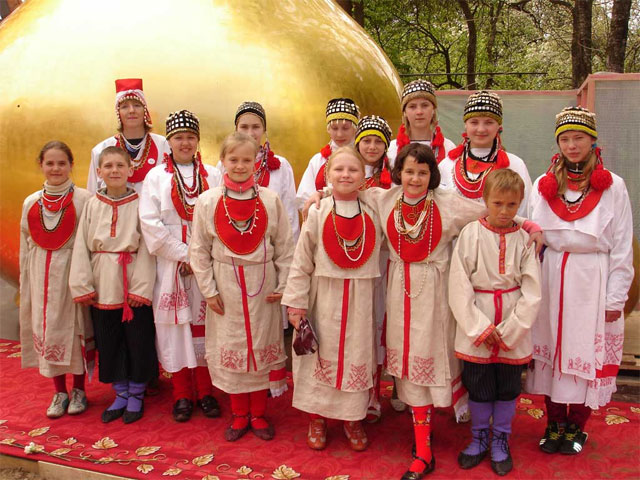
They themselves called themselves Vadjalayn, Vyaddya. Archaeological finds dating back to IV - VII centuries. They say that the Vod people came to these lands from the northern regions of Estonia and are ethnically related to Western Estonian tribes. In the Novgorod principality, Vod lived in a separate administrative unit — Vodskaya Pyatina; it was there that archaeologists discovered birch bark letters written in Cyrillic in Karelian language, akin to vozhanam. The Vod tribe took part in the wars against the Swedes and the German Crusaders, founding the fortress city of Yam-Yamburg (Kingisepp). Having been under the Swedes in troubled times, the Vod were again in Russia in 1703. After the conquest of these lands by Peter I, part of the vozhan was forcibly relocated to Kazan, and the vacant places were settled by Russians. Since then, the active assimilation of this nation with the Eastern Slavs began. Researchers of the Middle Ages note that male wrestlers were distinguished by their ability and skill, sharp, quick mind, courage, and dexterity in a swear. And women are described as cheerful, tall, light-brown beauties, dressed in clothes embroidered with beads and bells. They also note the ability of the leader to work hard and achieve wealth. Until 1534, pagan shrines remained in the Voda villages, but by decree of Tsar Ivan Vasilyevich, the archbishop Makari of Novgorod fought fiercely with them. As a result, over time, the Vod became completely Orthodox, and, in spite of the close proximity to the Protestants, the Finns and the Inkeris, marriages with the Gentiles were strictly suppressed.
Wedding traditions of the Votes
When reaching the age of 15, a young man Vod could take a 14-year-old girlfriend in marriage. The vozhanin first informed the priest about his desire to marry in order to determine the degree of kinship with his future wife and to prevent incest. Having received a positive response from the priest, the young man made an offer to the girl.
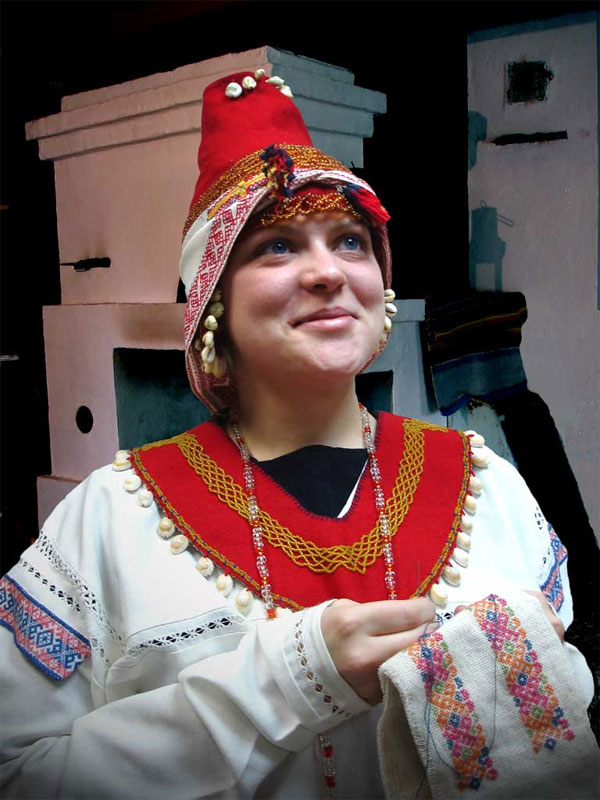
The priest conducted a secret engagement ceremony and only after that the bride's parents found out about the upcoming wedding. With this news, the bride's mother raised a scream to the whole house, grabbed her daughter by the hair and did not let go until the young man cut the girl's braid. The hair was solemnly handed over to the bridegroom with the words: "Take the braid with your head, be her master, and she be your slave." Further, the wedding ceremony did not differ from the already familiar to us, the Orthodox. But when she arrived at her husband's house, the bride fell into the hands of unmarried relatives of the groom. They took the bride to the hut, put it to the right of the door, and they themselves were located to the left. In this case, the bride had to bow to them until the evening. And when the unfortunate bride fell from fatigue, she was laid on the bed. The groom, in order to buy the bed with the bride, had to give the girls rich gifts. Wedding celebrations and festivities lasted 2 days. Unfortunately, like Izhora, vozhane over time also lost their ethnic identity, dissolved in Russian culture. In their ancient dialect there is no word “no”, and they also had a saying “Earth will be, trees will be, but there will be no leader”. But nowadays, 72 Votes live in 2 villages of the Kingisepp District of Lusatia and Krakol, who are trying to revive the language and the ancient culture of their people. The folklore singing festival of Votes is held annually in Lusatik.

They themselves called themselves Vadjalayn, Vyaddya. Archaeological finds dating back to IV - VII centuries. They say that the Vod people came to these lands from the northern regions of Estonia and are ethnically related to Western Estonian tribes. In the Novgorod principality, Vod lived in a separate administrative unit — Vodskaya Pyatina; it was there that archaeologists discovered birch bark letters written in Cyrillic in Karelian language, akin to vozhanam. The Vod tribe took part in the wars against the Swedes and the German Crusaders, founding the fortress city of Yam-Yamburg (Kingisepp). Having been under the Swedes in troubled times, the Vod were again in Russia in 1703. After the conquest of these lands by Peter I, part of the vozhan was forcibly relocated to Kazan, and the vacant places were settled by Russians. Since then, the active assimilation of this nation with the Eastern Slavs began. Researchers of the Middle Ages note that male wrestlers were distinguished by their ability and skill, sharp, quick mind, courage, and dexterity in a swear. And women are described as cheerful, tall, light-brown beauties, dressed in clothes embroidered with beads and bells. They also note the ability of the leader to work hard and achieve wealth. Until 1534, pagan shrines remained in the Voda villages, but by decree of Tsar Ivan Vasilyevich, the archbishop Makari of Novgorod fought fiercely with them. As a result, over time, the Vod became completely Orthodox, and, in spite of the close proximity to the Protestants, the Finns and the Inkeris, marriages with the Gentiles were strictly suppressed.
Wedding traditions of the Votes
When reaching the age of 15, a young man Vod could take a 14-year-old girlfriend in marriage. The vozhanin first informed the priest about his desire to marry in order to determine the degree of kinship with his future wife and to prevent incest. Having received a positive response from the priest, the young man made an offer to the girl.

The priest conducted a secret engagement ceremony and only after that the bride's parents found out about the upcoming wedding. With this news, the bride's mother raised a scream to the whole house, grabbed her daughter by the hair and did not let go until the young man cut the girl's braid. The hair was solemnly handed over to the bridegroom with the words: "Take the braid with your head, be her master, and she be your slave." Further, the wedding ceremony did not differ from the already familiar to us, the Orthodox. But when she arrived at her husband's house, the bride fell into the hands of unmarried relatives of the groom. They took the bride to the hut, put it to the right of the door, and they themselves were located to the left. In this case, the bride had to bow to them until the evening. And when the unfortunate bride fell from fatigue, she was laid on the bed. The groom, in order to buy the bed with the bride, had to give the girls rich gifts. Wedding celebrations and festivities lasted 2 days. Unfortunately, like Izhora, vozhane over time also lost their ethnic identity, dissolved in Russian culture. In their ancient dialect there is no word “no”, and they also had a saying “Earth will be, trees will be, but there will be no leader”. But nowadays, 72 Votes live in 2 villages of the Kingisepp District of Lusatia and Krakol, who are trying to revive the language and the ancient culture of their people. The folklore singing festival of Votes is held annually in Lusatik.
The story tells us about one more almost lost people - Vepsa, which is also known as chud, Vepsa, and blessed; draft, meydankelhiyzhed, tyamykelhiyzhed, narodnikad, chuharid, eudikee, people, vepsline. The area of its historical residence is Karelia - Prionezhsky district, districts of Leningrad, Kemerovo and Vologda regions. The Vepsa belong to the White Sea-Baltic race, and by language they belong to the Finno-Ugrians. The writing of this nationality has a Latin basis.
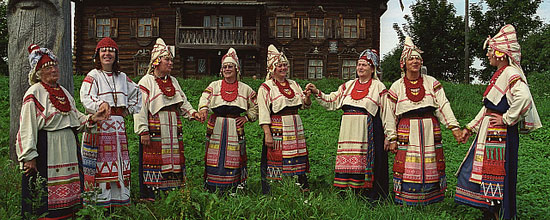
The first archaeological artifacts related to this tribe were found in Vepsic burial grounds and date back to the second half of the first millennium of our era. The earliest written references to Vepsa are found in treatises of the 6th century. Gothic chronicler of Jordan, in which the description of the tribe "Vas." In the X century. Arab Ibn Fadlan wrote about the people "Visu", and in the Habsburg chronicles of Adam of Bremen mentions "Vespe". Russian chroniclers wrote about the people "Ves", apparently meaning the lands inhabited by different ethnic groups. Modern archaeologists and historians believe that the Vepsians come from the southeastern Baltic. In the first millennium, they came to the land between the lakes - Ladoga, White and Onega. But since the end of the first millennium, these territories are beginning to be actively explored by the Russians, so the integration of the Veps into the old Russian culture and state begins. For 4 centuries, the Vepsians settled along the Onega Isthmus and the northern coast of the Svir River, mingling with the Karelians there, formed an ethnic group called people and livviki. Having mastered the Northern Dvina basin, the Vepps assimilated with the Komi and Slavs. What did the Vepsa do from time immemorial? Vepsians are famous for their skilful wood carving, birch bark weaving, embroidery and pottery. Since industrial production was never developed on the land of the Veps, this led to a significant outflow of population to other more developed regions. Elements of Vepsian life Traditional national clothes of the Chud have much in common with the clothes of the Slavs of the northern part of Russia. But, all the same it is distinguished by its characteristic features. Men's pants had a narrow course, and the shirts were sewn from unpainted fabric, which was decorated with embroidery on the collar, hem and sleeves. Women's attire had two options: the first was based on a sundress, the second was a skirt. Blue shestiklinny sundress sewn from homespun canvas. Under it they wore a long shirt with shoulder inserts, decorated on the hem, collar, sleeves and panels with rich ornamentation - embroidery, and a black apron over the sarafan. Skirts were sewn from homespun canvas or wool. They wore it with a shirt. In the festive version of the skirt, they wore a jacket made of monochrome purchased fabric (kazakk). As a headdress, married women preferred a collection and a warrior. They wore canvas Vepsa or cloth kaftans, sheepskin coats. Fur coats had straight cut and sewed without collars. Outerwear tied with a belt. At the feet of the Veps, as a rule, there were bast sandals and feet with a high (kotad, kotikod) and a low (stupnid) bootleg. For winter, boots or boots were worn.
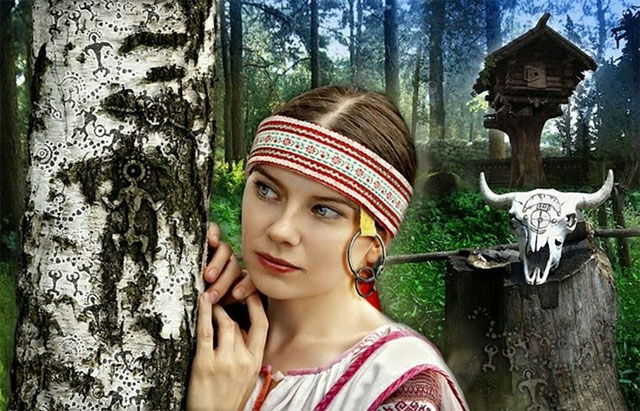
The main diet of the Vepsa included rye bread (leib), various uncooked shortbread (iupnik, kosґak, testdnik), round open pies stuffed with a mixture of eggs and semolina (levaљ), wickets, scissors. Especially popular were the barley dough with barley and cream filling (skancad), which was taken to eat with meat. Vepsians were also famous for their oatmeal pancakes filled with waves, cottage cheese or lingonberries. On pea flour, which was whipped with snow, Vepsa baked fritters and called them snowflakes (luminikad). Vepsian traditions The Vepsians adopted Orthodoxy at the same time as vozhane and Izhora. Therefore, they observe the holidays adopted in Orthodox Christianity. Wedding ceremonies are no different from Russian. The funeral tradition of the Vepsa, on the contrary, has cardinal differences. They have fun to celebrate funeral funerals, during which, under the will of the deceased, his favorite songs are played, they play his instruments. During the funeral procession, it is customary to give cake on a towel (if a man is buried) or on a scarf (if a woman is buried) to the first person to meet on the road to the cemetery. They put a cross on the grave after 40 days, and before that there was a stick there. In some villages, it is customary to cover the grave with a wide board. Juniper trees are planted on children's graves instead of crosses. This nation has not lost its pagan origins. To this day, they worship the spirits of juniper, spruce, alder and rowan. Grandmothers tell their grandchildren stories and tales about a snipe, a bear, a swallow, a hawk, a pike, and a snake giving happiness (ozamadooћet). There are myths about the house, shed, yard, volyan, forest, bathhouse, earthen host. Moreover, these spirits act as head of the family, who has a wife and children. These few people were able to preserve their cultural identity. Since the 80s of the twentieth century, Veps communities have emerged, which are trying to revive Veps alphabet, their native language and traditions inherent to Veps. Is it not surprising that such different peoples lived on such a relatively small territory?

The first archaeological artifacts related to this tribe were found in Vepsic burial grounds and date back to the second half of the first millennium of our era. The earliest written references to Vepsa are found in treatises of the 6th century. Gothic chronicler of Jordan, in which the description of the tribe "Vas." In the X century. Arab Ibn Fadlan wrote about the people "Visu", and in the Habsburg chronicles of Adam of Bremen mentions "Vespe". Russian chroniclers wrote about the people "Ves", apparently meaning the lands inhabited by different ethnic groups. Modern archaeologists and historians believe that the Vepsians come from the southeastern Baltic. In the first millennium, they came to the land between the lakes - Ladoga, White and Onega. But since the end of the first millennium, these territories are beginning to be actively explored by the Russians, so the integration of the Veps into the old Russian culture and state begins. For 4 centuries, the Vepsians settled along the Onega Isthmus and the northern coast of the Svir River, mingling with the Karelians there, formed an ethnic group called people and livviki. Having mastered the Northern Dvina basin, the Vepps assimilated with the Komi and Slavs. What did the Vepsa do from time immemorial? Vepsians are famous for their skilful wood carving, birch bark weaving, embroidery and pottery. Since industrial production was never developed on the land of the Veps, this led to a significant outflow of population to other more developed regions. Elements of Vepsian life Traditional national clothes of the Chud have much in common with the clothes of the Slavs of the northern part of Russia. But, all the same it is distinguished by its characteristic features. Men's pants had a narrow course, and the shirts were sewn from unpainted fabric, which was decorated with embroidery on the collar, hem and sleeves. Women's attire had two options: the first was based on a sundress, the second was a skirt. Blue shestiklinny sundress sewn from homespun canvas. Under it they wore a long shirt with shoulder inserts, decorated on the hem, collar, sleeves and panels with rich ornamentation - embroidery, and a black apron over the sarafan. Skirts were sewn from homespun canvas or wool. They wore it with a shirt. In the festive version of the skirt, they wore a jacket made of monochrome purchased fabric (kazakk). As a headdress, married women preferred a collection and a warrior. They wore canvas Vepsa or cloth kaftans, sheepskin coats. Fur coats had straight cut and sewed without collars. Outerwear tied with a belt. At the feet of the Veps, as a rule, there were bast sandals and feet with a high (kotad, kotikod) and a low (stupnid) bootleg. For winter, boots or boots were worn.

The main diet of the Vepsa included rye bread (leib), various uncooked shortbread (iupnik, kosґak, testdnik), round open pies stuffed with a mixture of eggs and semolina (levaљ), wickets, scissors. Especially popular were the barley dough with barley and cream filling (skancad), which was taken to eat with meat. Vepsians were also famous for their oatmeal pancakes filled with waves, cottage cheese or lingonberries. On pea flour, which was whipped with snow, Vepsa baked fritters and called them snowflakes (luminikad). Vepsian traditions The Vepsians adopted Orthodoxy at the same time as vozhane and Izhora. Therefore, they observe the holidays adopted in Orthodox Christianity. Wedding ceremonies are no different from Russian. The funeral tradition of the Vepsa, on the contrary, has cardinal differences. They have fun to celebrate funeral funerals, during which, under the will of the deceased, his favorite songs are played, they play his instruments. During the funeral procession, it is customary to give cake on a towel (if a man is buried) or on a scarf (if a woman is buried) to the first person to meet on the road to the cemetery. They put a cross on the grave after 40 days, and before that there was a stick there. In some villages, it is customary to cover the grave with a wide board. Juniper trees are planted on children's graves instead of crosses. This nation has not lost its pagan origins. To this day, they worship the spirits of juniper, spruce, alder and rowan. Grandmothers tell their grandchildren stories and tales about a snipe, a bear, a swallow, a hawk, a pike, and a snake giving happiness (ozamadooћet). There are myths about the house, shed, yard, volyan, forest, bathhouse, earthen host. Moreover, these spirits act as head of the family, who has a wife and children. These few people were able to preserve their cultural identity. Since the 80s of the twentieth century, Veps communities have emerged, which are trying to revive Veps alphabet, their native language and traditions inherent to Veps. Is it not surprising that such different peoples lived on such a relatively small territory?
Upvote
0













